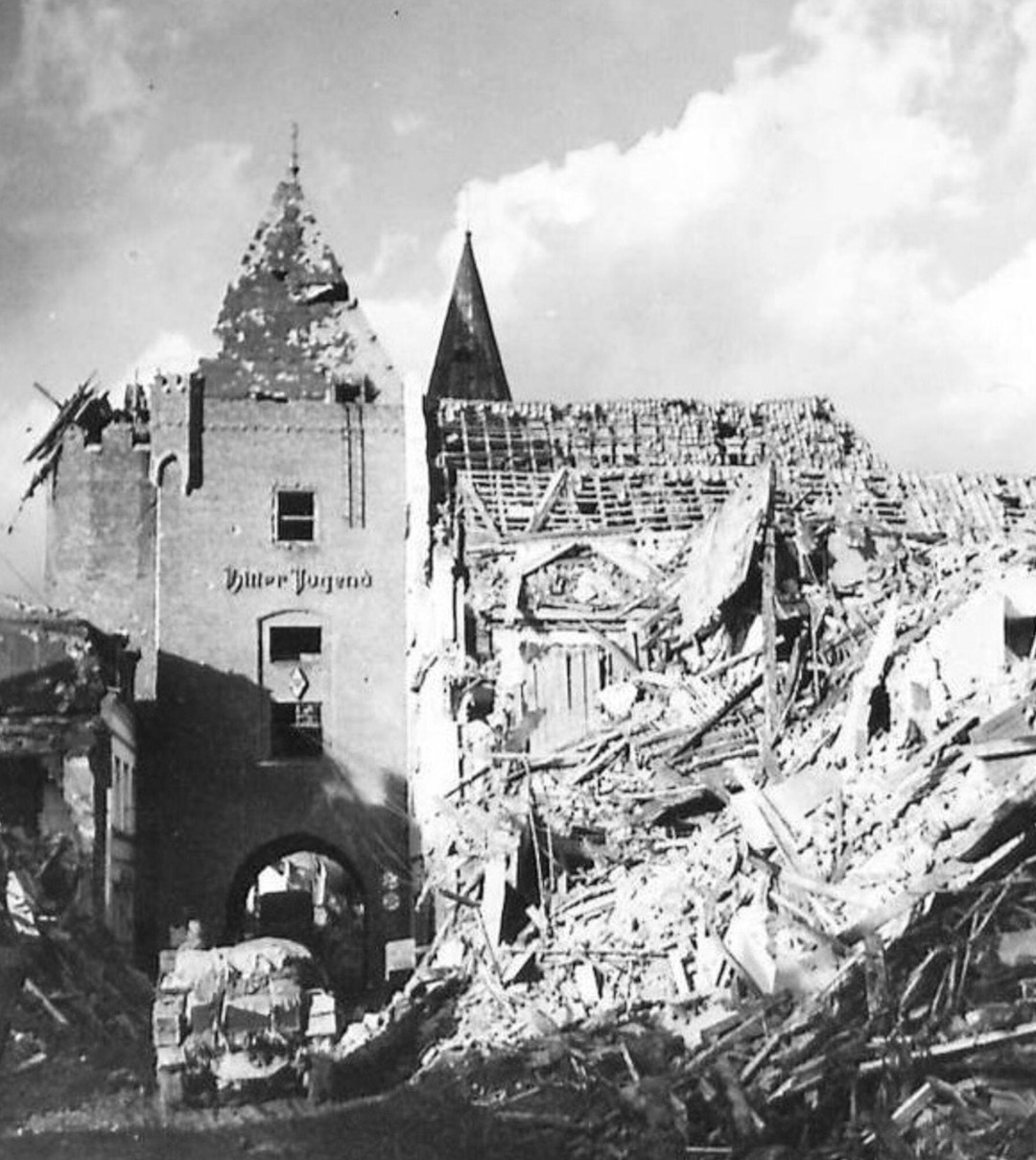Just across the border, the Wehrmacht is fighting against the advance of the Allies. By December, only men between the ages of 16 and 60, who are called up for the Volkssturm, and forced laborers—Eastern Europeans and Dutch deported to the German Reich—remain in Goch. Goch is incorporated into the Westwall defense. The forced laborers have to dig trenches and deep anti-tank ditches around the city to stop enemy tanks.
In February 1945, the Allied ground troops begin their major offensive to retake the left bank of the Rhine. On the night of February 8, Goch is heavily bombed. The city turns into a burning field of rubble. The evacuation saves most of Goch's citizens from death by the hail of bombs. However, more than 150 forced laborers die.
Ten days later, on February 18, the Battle of Goch begins. Scottish troops cross the anti-tank ditches and enter the city from the north. In the south, on the other side of the Niers, other units fight street by street to capture the old town. After three days, on February 21, the German paratroopers surrender. But then the German artillery begins shelling Goch.
